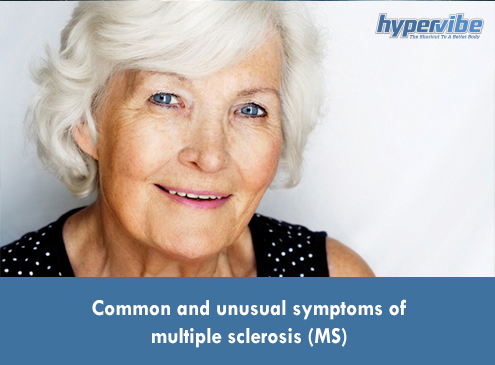What Is Fibromyalgia and What Causes It?
Fibromyalgia comes from the words “my,” which means “muscle” in Greek, “algia,” which is the Greek term for “pain,” and “fibro,” which is the Latin word defining the fibrous tissues. So the meaning of this term would be pain of the fibrous (muscle) tissue.
Fibromyalgia is a syndrome, not a condition, and is chronic, meaning that it lasts for a long time. A syndrome is a collection of symptoms and medical issues, while a condition has clear causes and signs.
In the US, there are between 3 and 6 million people affected by this syndrome, but the exact number is hard to guess since this health issue doesn’t have clear signs and is difficult to diagnose. When you break a bone, you go to your doctor, and he can see the fracture and indicate the cause – osteoporosis or simply a fall. But if your muscles are stiff and painful and you feel tired, it may be difficult to say if it’s because of fibromyalgia, or because you didn’t stretch after a workout session, or because your diet is inadequate and you don’t get enough sleep.
Fibro affects mostly middle-aged people and is more likely to occur in those who have lupus, rheumatoid arthritis, spinal arthritis, or other rheumatic diseases. Also, it’s more likely to affect women, although it’s not clear whether genetics play a role.
In a previous series of articles, we showed that whole body vibration was found to have positive effects in fibromyalgia patients, and we discussed some natural remedies for easing fibro pain. Also, we saw that gluten-free, vegetarian diets may help relieve some of the symptoms fibromyalgia sufferers have to deal with regularly.
But in today’s article, we’ll take a look at the causes and symptoms of fibromyalgia to understand how this ailment starts, what triggers it, and what we can do to avoid it.
Why and how does fibromyalgia develop?
Most likely, a combination of factors contributes to the occurrence of fibromyalgia. Stressful, traumatic factors and emotional events seem to be linked with this syndrome – repetitive injuries, physical or emotional stress like a car accident or post-traumatic stress disorders, central nervous system problems, infections, conditions like lupus and rheumatoid arthritis, and maybe genetics as well.
If something affects the central nervous system and disrupts the production of chemicals and how pain messages are carried around the body, this may also lead to extreme sensitivity and constant pain. In people with fibro, serotonin, noradrenaline, and dopamine levels are lower than normal, and these may cause problems with appetite, sleep, mood, and behavior, as well as increased stress levels.
Serotonin is associated with anxiety-reducing and calming reactions and leads to lowered pain thresholds or increased pain sensitivity. In fibro patients, the effectiveness of endorphins (which are the body’s natural painkillers) may be reduced, leading to increased pain signals.
Sleep problems may also be not just symptoms but also a cause of this disorder. Patients with fibromyalgia can experience extreme fatigue due to the lack of sleep, and studies suggest this also increases pain levels. Traumatic events like the death of a loved one, having an operation, breakups or abusive relationships, and even giving birth may trigger fibromyalgia symptoms.
As you can see, there’s no clear cause for this syndrome, and this makes it even more difficult to diagnose and cure.
How fibromyalgia manifests
The manifestations of fibromyalgia may vary from one person to another, but common symptoms include:
- widespread pain, described as dull ache that lasts for months, and affects both sides of the body
- fatigue even after sleeping for several hours
- sleep problems
- restless leg syndrome
- attention difficulties, and the inability to concentrate on mental tasks
- headaches
- depression
- abdominal pain and cramps
- stiffness, especially in the morning
- irritable bowel syndrome
- painful periods
- sensitivity to cold and heat
- tingling and numbing in hands and feet
- vision problems
- pelvic and urinary problems
- nausea
- dizziness
- chest pain
- skin problems
- flu like symptoms
Patients usually experience only some of these symptoms, but they’re disturbing enough to affect one’s quality of life and interfere with daily activities, making it difficult to perform.
What we can do to prevent fibromyalgia
Fibromyalgia can’t be prevented or cured, but some solutions may help manage the symptoms and reduce the duration of flare-ups. In general, treatments focus on managing pain and fatigue, reducing depression, and decreasing the sensitivity to pain, while allowing the sufferer to practice daily activities without feeling exhausted.
Cardiovascular exercise is recommended for managing fibro, swimming and jogging being good solutions. Whole body vibration is also a safe option, but the intensity should be slowly increased to avoid muscle soreness. Medicines may also be recommended to relax the muscles, improve sleep quality, and relieve muscle and joint pain. Antidepressants may be prescribed in some cases, along with nonprescription painkillers.
Relaxation therapy and cognitive-behavioral therapy may be a good idea if you’re finding it difficult to cope with fibromyalgia effects and experiencing frequent mood swings and depression episodes.
Hope you’ll find this article useful. If you want to add something, comment below or join our Facebook community and share your thoughts with us there!













